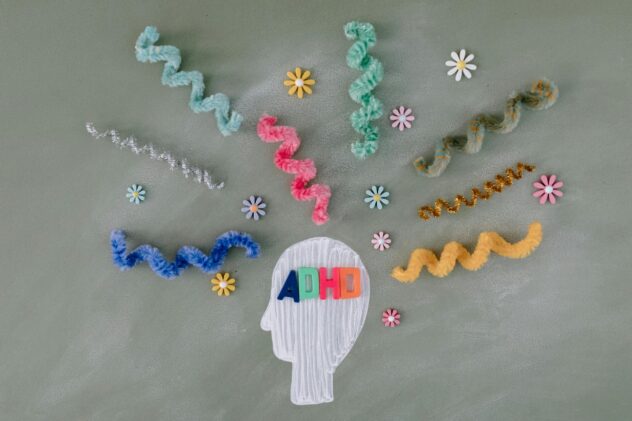Exercise for ADHD and Neurodivergence: Boost Focus and Balance Naturally.
For those of us navigating ADHD or other neurodivergent traits, the idea of regular exercise can feel like yet another “should” in a long list of “shoulds.” Yet, as much as it might feel like a chore, physical activity can be a surprisingly powerful tool for supporting focus, mood, and overall well-being. But let’s be clear: this isn’t about hitting the gym every day or forcing ourselves into a routine that feels impossible. Instead, it’s about finding ways to move our bodies that genuinely support our unique needs. Let’s dive into why exercise for ADHD and neurodivergence is so important.
Research has shown that exercise helps the brain produce neurotransmitters like dopamine, which play a role in motivation, focus, and emotional regulation, which all areas that can present challenges for those with ADHD or neurodivergent traits. So, let’s dive into how movement, in its many forms, can become a part of your toolkit for navigating the world as a neurodivergent individual. For more tips on creating a focus-friendly environment, check out our guide on setting up an ADHD-friendly workspace.
Why Exercise Matters for ADHD and Neurodivergent Brains.
Boosting Dopamine and Serotonin Levels
Unlock peak brain performance with science-backed biohacks. Join free now & get your guide for just £4.99 (45% off)!

For those with ADHD, the brain’s reward pathways are often in need of a boost. Dopamine and serotonin, two key neurotransmitters, play crucial roles in regulating mood, motivation, and attention. Exercise has been shown to naturally increase the production of these “feel-good” chemicals, offering a natural lift that supports sustained focus and mood stability. This isn’t about trying to “fix” ourselves; it’s about finding tools that genuinely help us navigate our day-to-day.
Regulating Energy and Reducing Hyperactivity
One of the well-known aspects of ADHD is that our energy levels can be all over the place; hyperactive one moment, exhausted the next. Regular movement can help channel that energy in a way that feels good and productive. Exercise doesn’t necessarily mean high-intensity workouts. Simple activities like walking, swimming, or even dance can help burn off excess energy and reduce the restlessness that so many of us experience.
Improving Sleep Quality
Sleep can be a big challenge for those of us with neurodivergent brains. Many neurodivergent individuals report sleep issues, from difficulty falling asleep to waking up frequently during the night. Regular physical activity helps promote better sleep by balancing energy levels and reducing anxiety. When we move our bodies during the day, it becomes easier to wind down at night.
Finding the Right Type of Exercise for You
Low-Intensity Activities for Focus and Calm
For some, high-intensity exercise might be too stimulating, especially if you’re already feeling overwhelmed. In this case, low-intensity activities like yoga, tai chi, or even a gentle walk in nature can provide a calming effect while still supporting brain health. These activities promote mindfulness and relaxation, helping to ease the sensory overload that can come with neurodivergence.
High-Intensity Workouts for Motivation and Energy Release
If you thrive on high energy, consider workouts that let you fully engage and get a real burst of energy out. Activities like running, cycling, or high-intensity interval training (HIIT) can be excellent choices. These exercises provide a significant boost in dopamine and endorphins, which can help improve focus and reduce impulsivity for a while after you’re done.
Creative Movement: Dance, Climbing, and Martial Arts
Sometimes, traditional exercise routines can feel too repetitive or unengaging. For those who are neurodivergent, finding activities that allow for creativity and flexibility can be a game-changer. Dance, rock climbing, and martial arts not only allow for physical movement but also require focus and problem-solving skills. This combination can be especially engaging for ADHD brains, which often crave novelty and mental stimulation.
Practical Tips to Make Exercise Work for You
Set Small, Realistic Goals
Let’s face it: consistency is hard, especially when the routine doesn’t come naturally. Instead of setting big, overwhelming goals, start small. Perhaps it’s a 10-minute walk a few times a week or a short stretch in the morning. Remember, any movement counts, and it’s okay to build up gradually. Over time, you’ll find what works best for you. Your exercise for ADHD and neurodivergence needs to fit into your routine easily, so you can maintain it.
Use Exercise as a Transition Tool
For those who struggle with switching between tasks, exercise can be a helpful “bridge” activity. For example, a few minutes of stretching or a quick walk can serve as a break between focused work sessions, making it easier to transition from one task to the next. Using exercise in this way can create a rhythm to your day that supports both focus and relaxation.
Incorporate Sensory-Friendly Options
If you’re sensitive to noise, crowds, or certain textures, traditional gym environments might not be the best fit. Instead, consider sensory-friendly options like working out at home, using noise-cancelling headphones, or choosing outdoor spaces where you can control your surroundings. The goal is to create a movement routine that respects and accommodates your sensory needs.
Fidget Tools and Movement Breaks
For neurodivergent individuals who may struggle with sitting still, incorporating small movements throughout the day can make a big difference. Consider using fidget tools or taking brief movement breaks during sedentary activities. This approach provides a steady release of energy, making it easier to maintain focus during work or study sessions.
Exercise for ADHD and Neurodivergence: Sample Workouts to Try
1. Focus-Boosting Walk
A 20-minute walk, ideally in a green space, can do wonders for clarity and focus. Walking outdoors provides gentle exercise combined with sensory input from nature, which can be especially grounding. If you enjoy listening to music or podcasts, this can also be a good time to engage with audio content that keeps you focused without being overstimulating.
2. Short Burst Circuit
For days when you need a quick energy boost, try a short circuit. For example:
- 10 jumping jacks
- 10 push-ups
- 10 squats
- 10-second plank hold
Repeat this circuit 2-3 times with short breaks in between. This type of quick workout provides a fast release of energy, helping to reset your focus.
3. Mindful Yoga Flow
Try a simple yoga flow focused on breathing and stretching. Basic poses like child’s pose, cat-cow, and forward folds can help you reconnect with your body and calm your mind. This type of movement is particularly helpful if you’re feeling overwhelmed or overstimulated.
4. Dance or Movement Session
Put on your favorite playlist and dance like no one’s watching. This is a great way to burn off energy while having fun. The rhythm of the music can be especially helpful for focus, and dance allows for creative expression, which many neurodivergent individuals find beneficial.
Incorporating Omega-3 for Enhanced Focus
In addition to regular exercise, certain supplements can further support cognitive function. Omega-3 fatty acids, particularly EPA and DHA, are known to enhance brain health and improve focus. Consider incorporating omega-3-rich foods like fatty fish into your diet or consult with a healthcare professional about supplementation to complement your exercise routine.
Final Thoughts: Embrace Movement in a Way That Feels Right for You
Exercise isn’t a one-size-fits-all solution, and for those of us with ADHD or other neurodivergent traits, it’s crucial to find an approach that feels supportive, not forced. The goal here isn’t to “fix” yourself but to add a tool to your self-care routine that genuinely helps you navigate the world a little more easily.
Finding movement that works for you, whether it’s a walk in the park, a burst of activity in the living room, or a quiet moment stretching in the morning, can make a real difference. Embrace the process, stay flexible, and remember that every bit counts.
Join Our Community
Become a part of the Herbal Biohacker family! Subscribe to our newsletter for the latest insights, tips, and support tailored for neurodivergent individuals. Together, we can navigate the path to enhanced well-being.







